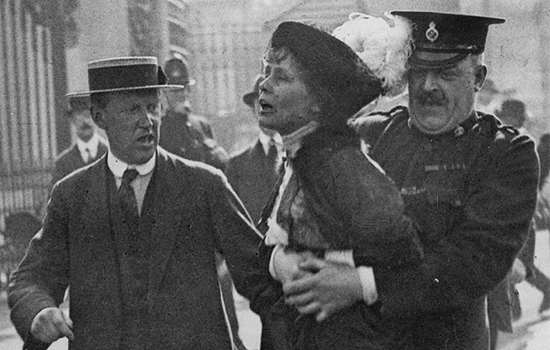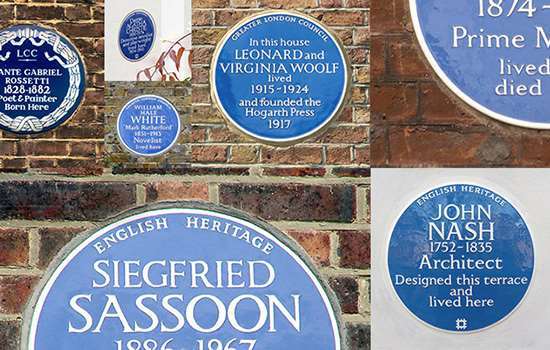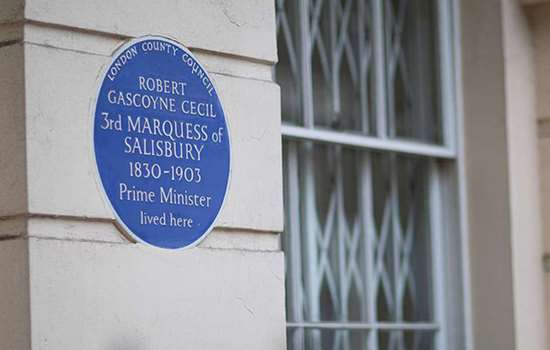HUNTER, Sir Robert (1844–1913)
Plaque erected in 2020 by English Heritage at 5 Louvaine Road, Battersea, London, SW11 2AQ, London Borough of Wandsworth
All images © English Heritage
Profession
Solicitor, Civil Servant and Co-Founder of the National Trust
Category
Historical Sites, Law and Law Enforcement, Philanthropy and Reform
Inscription
Sir ROBERT HUNTER 1844-1913 Co-founder of the National Trust lived here 1869-1872
Material
Ceramic
Solicitor, civil servant and co-founder of the National Trust, Sir Robert Hunter was a leading figure in safeguarding the protection of open spaces and historic places in Britain. He is commemorated with a blue plaque at 5 Louvaine Road, Battersea, where he lived between 1869 and 1872 – a short but significant period of his life, both professionally and personally.
Early life and training
Born on 27 October 1844 in Camberwell, Surrey, Robert Hunter was the only son of Robert Lachlan Hunter, a master mariner and ship-owner, and his wife Anne, née Lachlan. Graduating with first-class honours in logic and moral philosophy from University College, London (1865), Hunter trained to be a solicitor under Messrs Eyre and Lawson. In 1866, he entered an essay competition on the best means of preserving common land for the public and was one of six winning essays which were published together in 1867. The same year, Hunter was admitted as a solicitor.
He was soon brought to the attention of Philip Henry Lawrence, solicitor for the newly established Commons Preservation Society (CPS) who were leading a dispute against the 5th Earl Spencer for wanting to enclose large parts of Wimbledon Common. Hunter helped prepare the legal case against Spencer alongside other similar cases for commons in Berkhamsted, Hampstead Heath and Plumstead. By 1869, Lawrence had sold his firm to Hunter and two other partners. They created the new firm of Fawcett, Horne and Hunter.
Success and Sorrow
In 1869, Hunter married Emily Browning and the couple moved to a newly built brick terrace at 5 Louvaine Road, Battersea, only a few minutes’ walk from Wandsworth Common. Hunter joined the local committee to preserve the common which, like that in Wimbledon, was under threat of enclosure and development by Earl Spencer.
In 1871, Hunter was put in charge of negotiating the settlement deal with Spencer whereby the common was transferred to a body of conservators. Parliamentary bills to preserve Wimbledon and Wandsworth Commons were duly enacted in August that year. While living in Battersea, Hunter continued to work tirelessly for the CPS. One of his most celebrated successes was the recovery of 3,000 acres of Epping Forest – a bitterly contested case that lasted three years (1871–4).
Unfortunately Hunter’s professional triumphs at this time were eclipsed by personal tragedy when, in early 1872, both his wife, Emily, and new born son, Robert, died within days of each other. After this heart-breaking loss, Hunter left the house at Louvaine Road and returned to live with his parents until he remarried in 1877.
The National Trust
Hunter continued to be an active member of CPS campaigns even after taking a new prestigious appointment as solicitor to the General Post Office in 1882, a position he held for over 30 years. From 1875, he worked with housing reformer Octavia Hill on the protection of open spaces in London. Hill later introduced him to Canon Hardwicke Rawnsley, one of the key campaigners against industrial development in the Lake District.
United by their belief in the preservation of open spaces and historic places, Hunter, Rawnsley and Hill met in 1893 to discuss the formation of a ‘national trust for places of historic interest or natural beauty’. Hunter drew up the constitution for the society, which was agreed at Grosvenor House in July 1894. Hunter was knighted for his services to conservation that same year.
On 12 January 1895 the National Trust was founded as a legal non-profit organisation, with Hunter as its first Chairman. The trust was given permanent legal foundation through the National Trust Bill, drafted by Hunter and passed in Parliament in 1907.
In July 1913, Hunter retired from his position at the General Post Office. He died at his home only a few months later on 6 November 1913, aged 69. Today, the National Trust continues Hunter’s work of protecting places of natural beauty and historic significance, and the many green spaces in London that Hunter saved remain freely open for all to enjoy.
Nearby Blue Plaques
More About Blue Plaques



